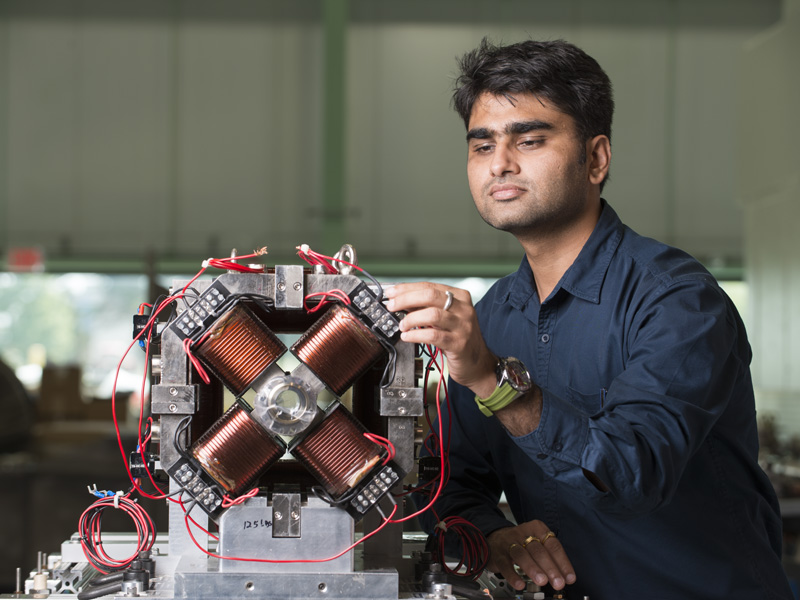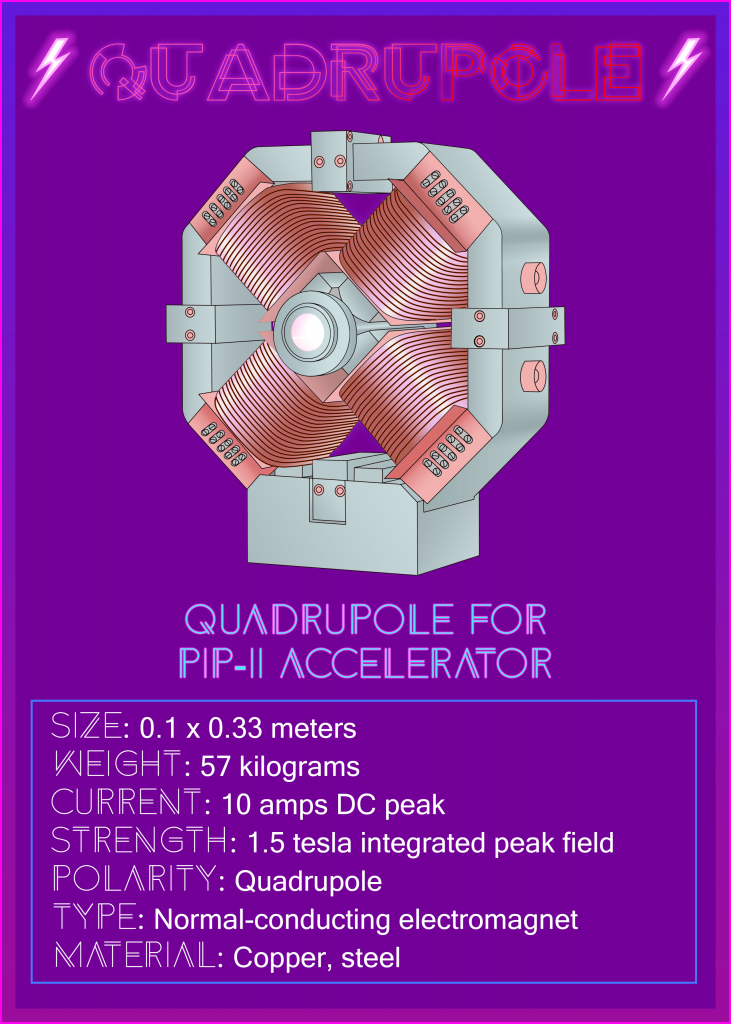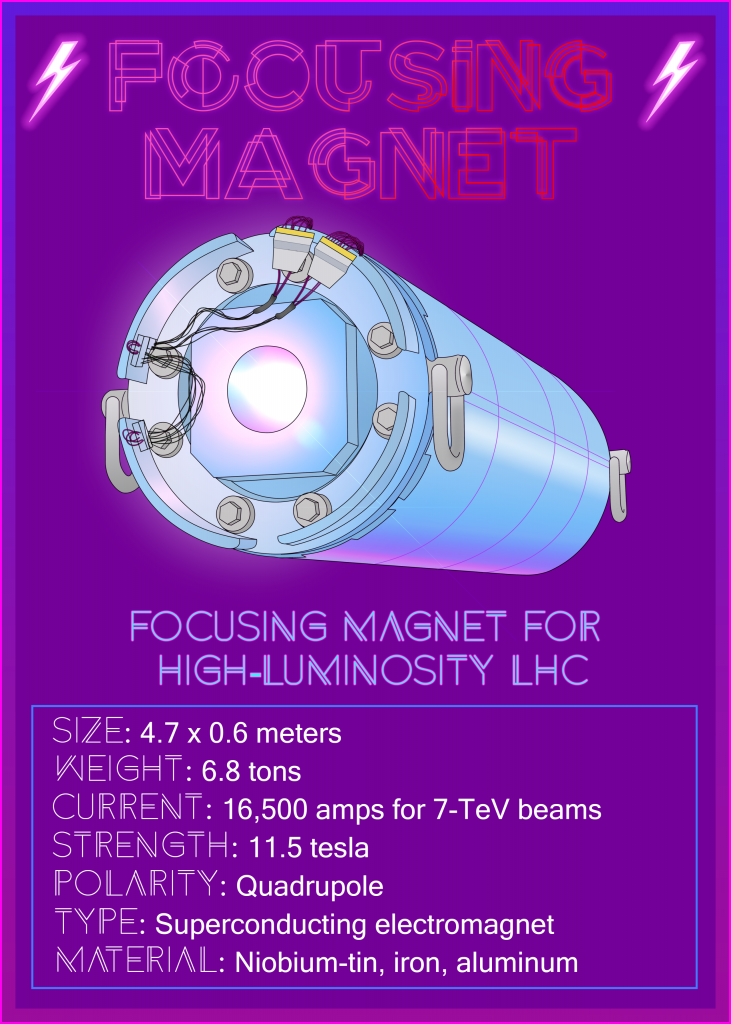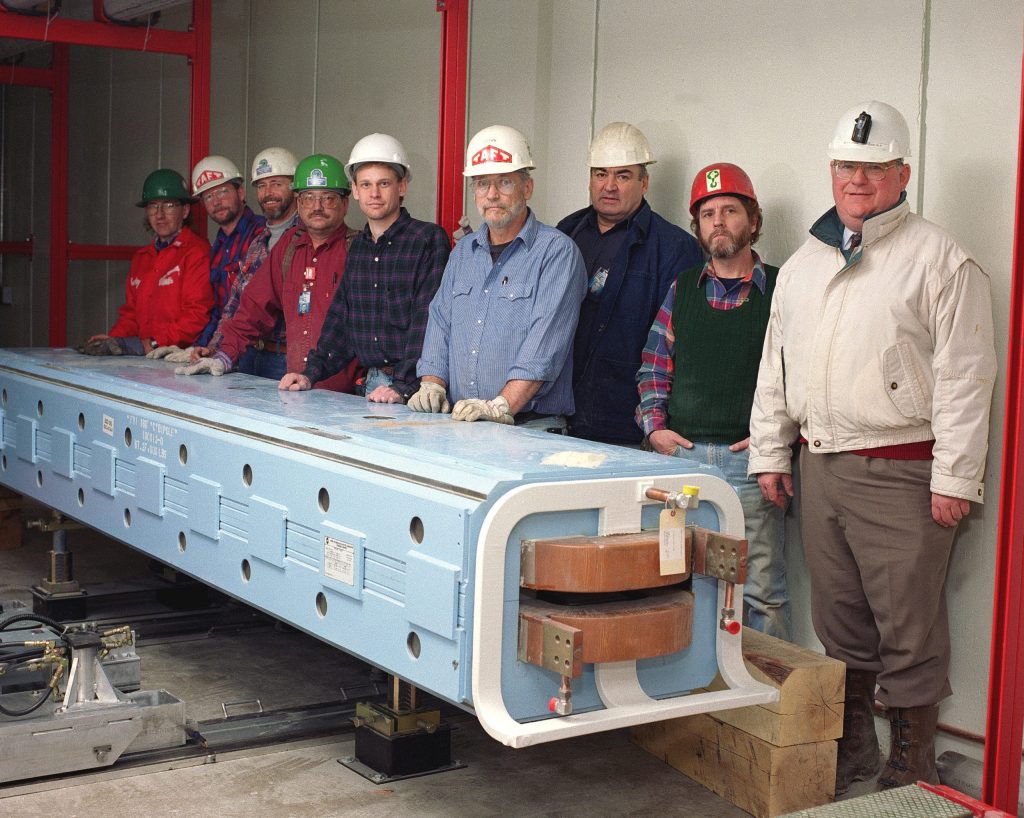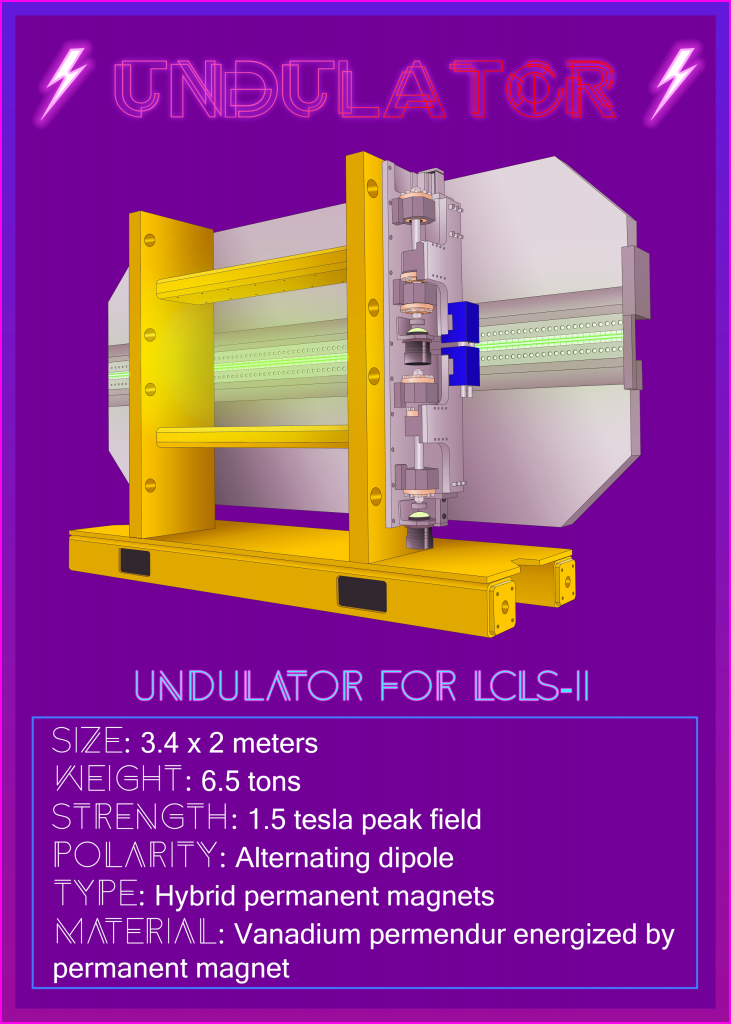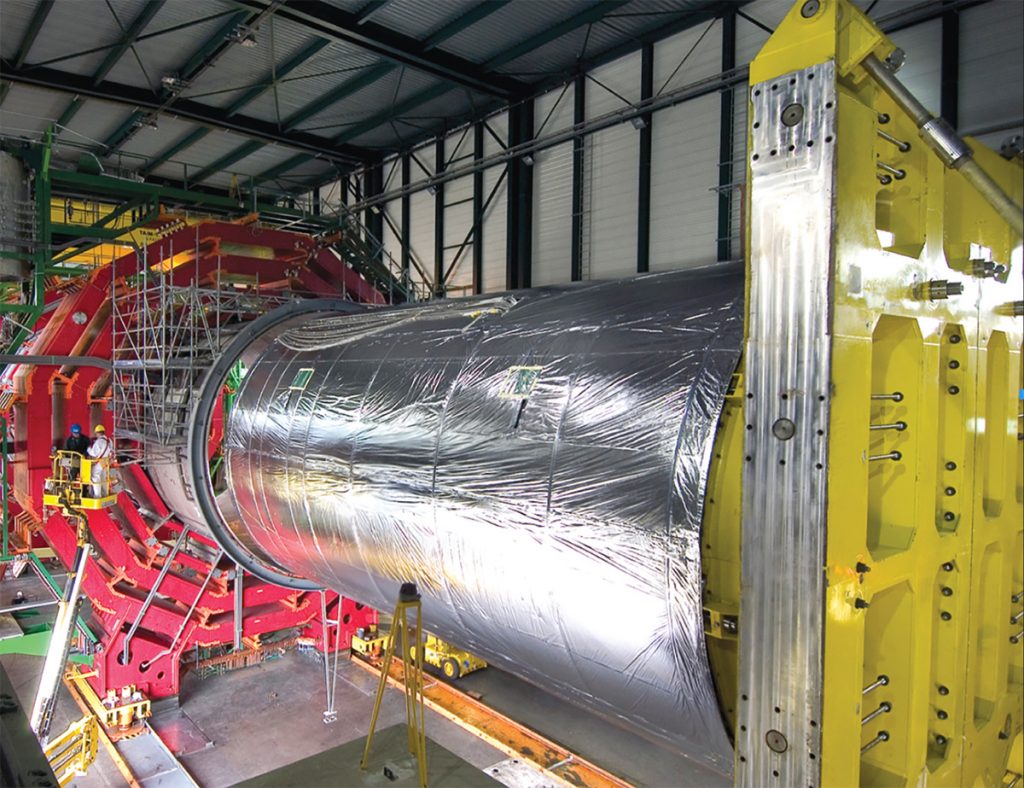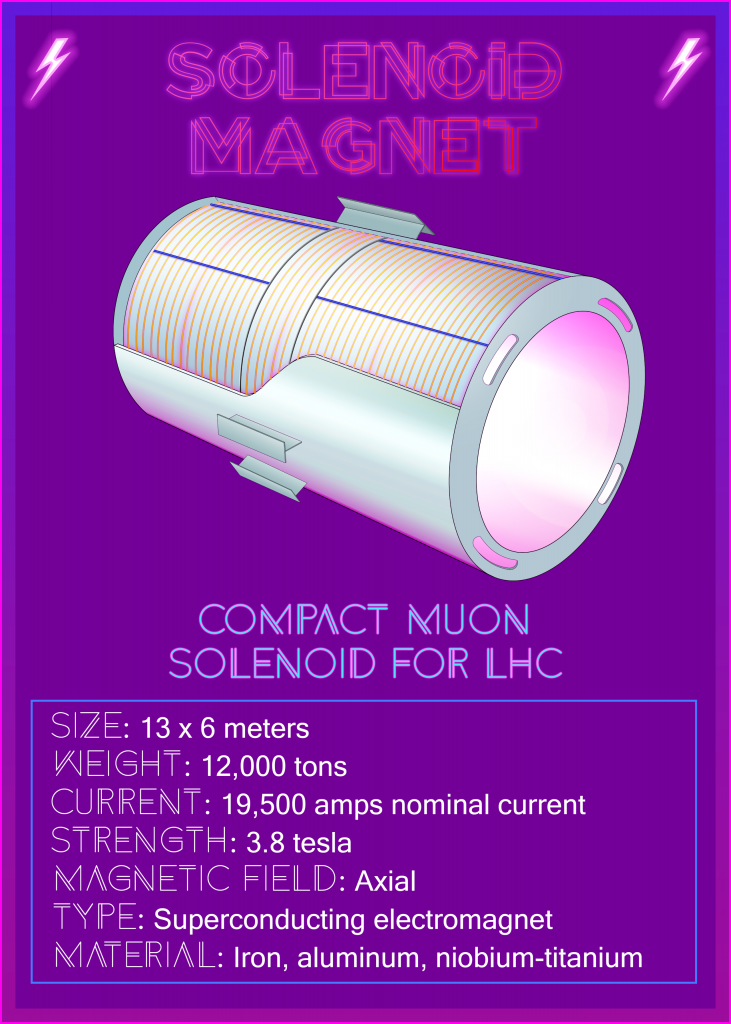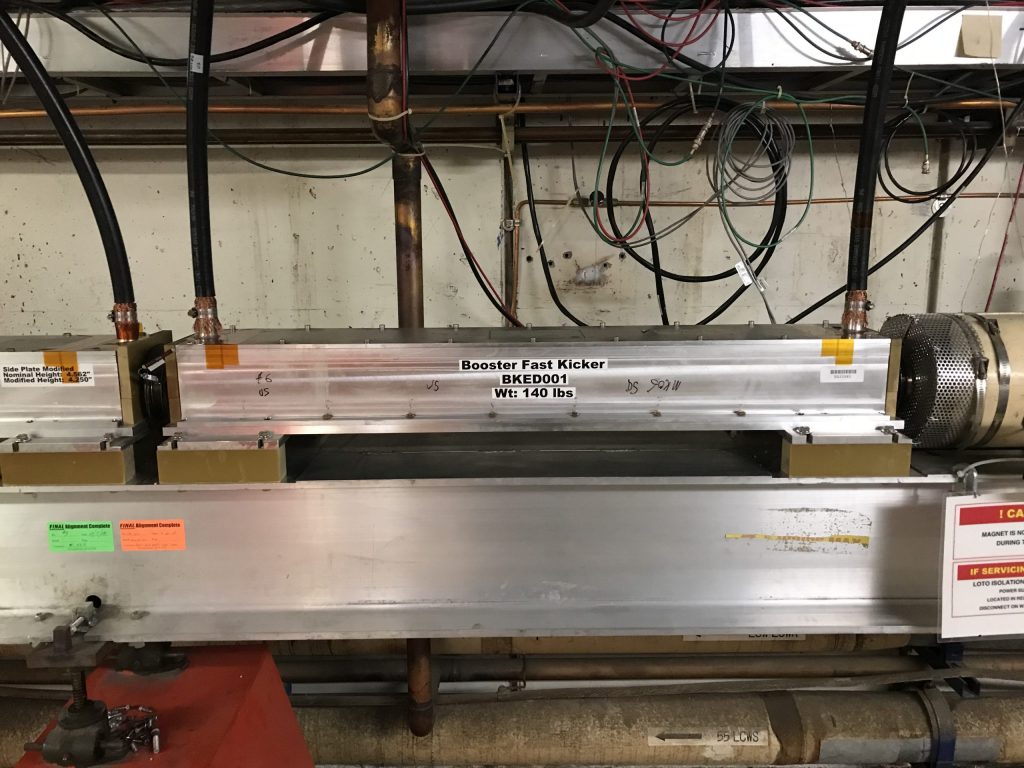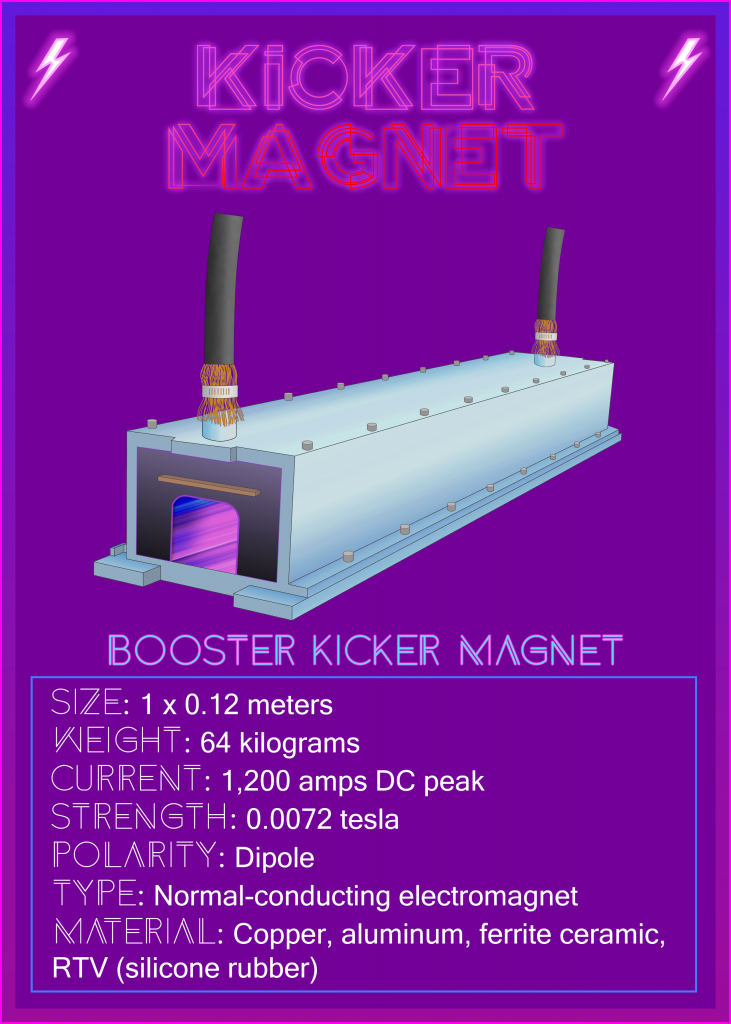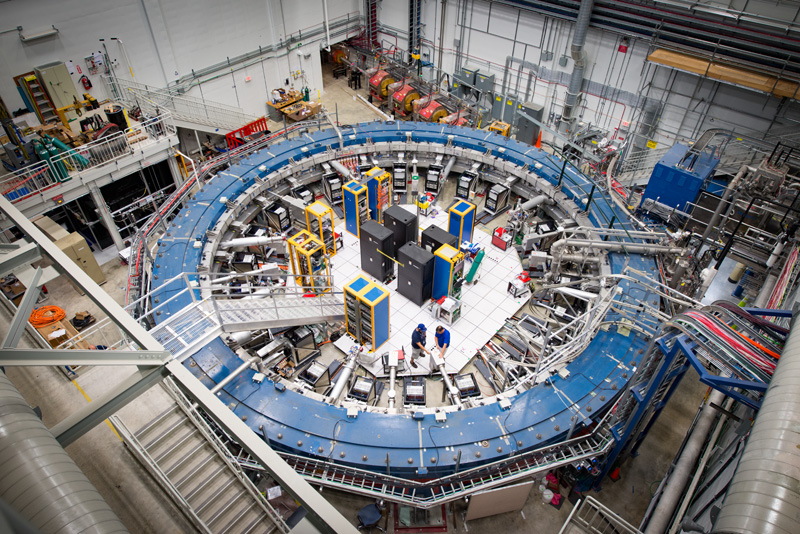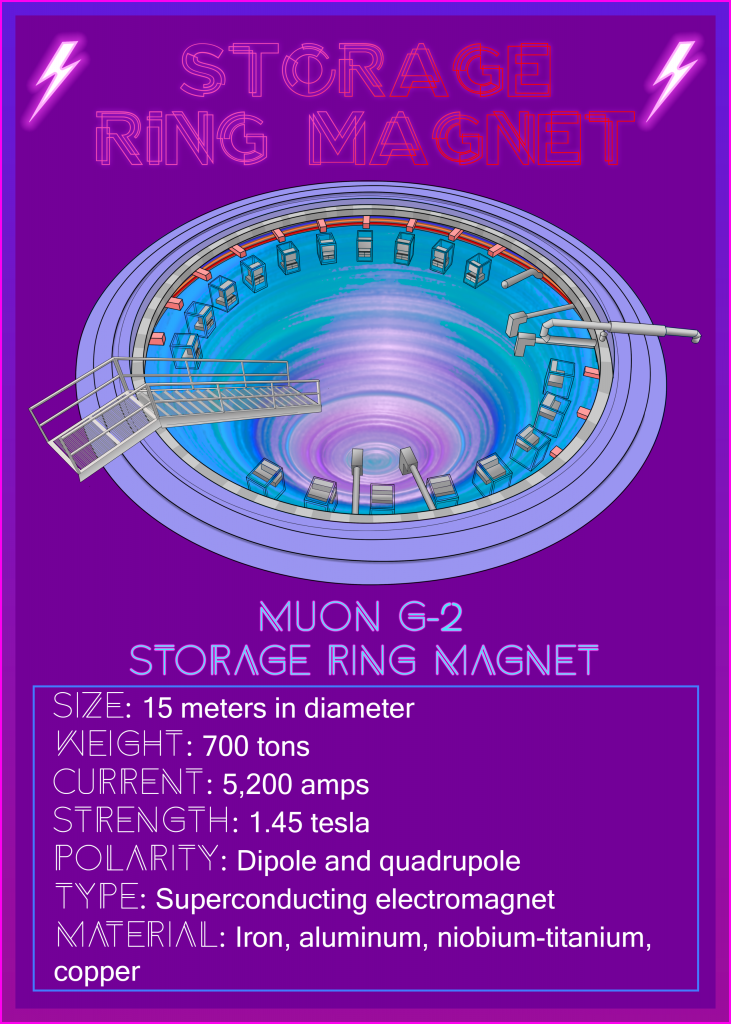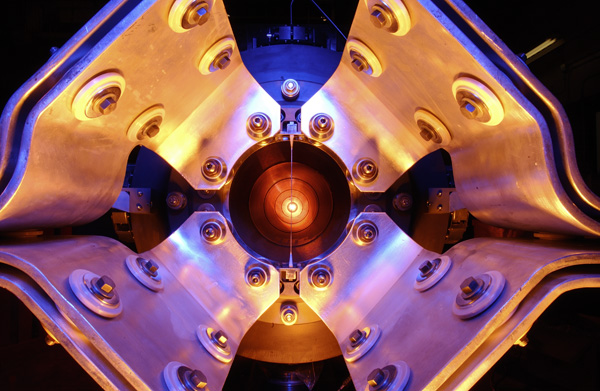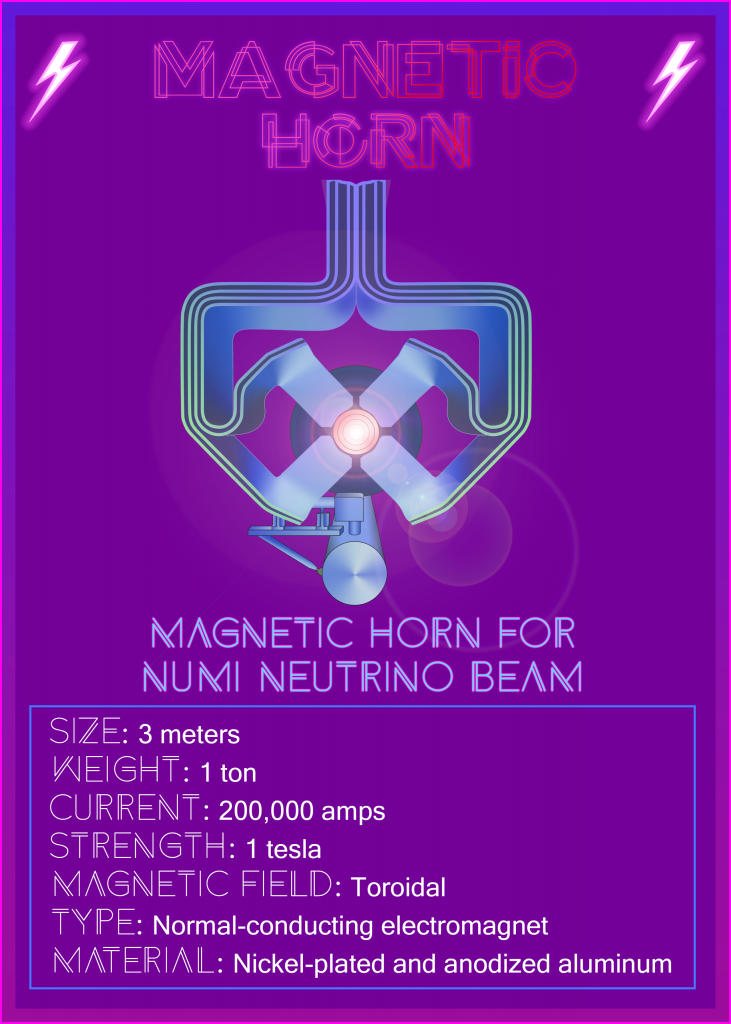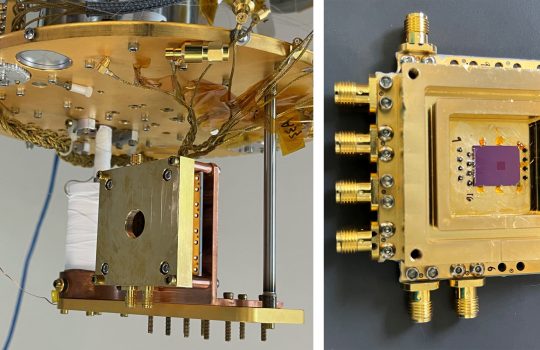Missing March Madness? Let Fermilab fill a small part of the void created in these times of social distancing and sheltering-in-place. Participate in our sendup of the NCAA tournament: March Magnets.
Particle physics fans know that magnets are major players in the instruments scientists use to examine the universe’s smallest constituents. Less appreciated is their sheer variety: diverse purposes, sizes, shapes and materials.
Below are eight distinct magnet types used in particle physics, each with an example from a project or experiment in which the U.S. Department of Energy’s Fermilab is a player. We start at Elite Eight stage of the playoffs. So add these eight magnets to your repertoire of particle physics knowledge.
Then on Monday, March 30, head over to the Fermilab Twitter feed to participate in our March Magnets playoffs. On Monday and Tuesday, March 30 and 31, you can vote on which four of our eight magnets get to advance to the next stage. Vote for your Final Four on Friday, April 3. And vote for the champion on Monday, April 6.
The champion will be announced on Fermilab’s Twitter feed.
Want to understand how magnets work in the field of particle physics? Read a Physics 101 primer of magnets’ roles in accelerators.
Have fun with our March Magnets tournament!
1. Quadrupole magnet for linear particle accelerator
What is it?
Physicists use sequences of quadrupole magnets to keep particle beams focused as they travel through a particle accelerator. At the exact center of these magnets, the magnetic field is zero, and particles feel no force. But the farther a particle deviates from the ideal beam trajectory that goes through the center of these magnets, the stronger the magnetic field. It is these fields that push the charged particles back to the center of the magnet and keep the beam on track.
Example
PIP-II linear accelerator quadrupole magnet at Fermilab
Why it’s cool
The 26 quadrupole magnets of the new PIP-II linear accelerator at Fermilab, built as in-kind international contributions by the Bhabha Atomic Research Center in India, each have four coils made of copper wire, arranged in alternating orientation (north-south-north-south). The challenge is that a single quadrupole magnet only can create a focusing force in one direction perpendicular to the beam (x axis), and it defocuses the beam in the other direction perpendicular to the beam (y axis). The solution is the installation of a second magnet with switched polarization (south-north-south-north) to create a focusing force along the y-axis direction. The installation of a carefully calculated and placed series of quads with different polarizations, often designed as doublet and triplet magnets, produces a net focusing force and helps ensure that the protons will stay on track.
Specifications for PIP-II quadrupole magnet
Size: 0.1 meters long and 0.33 meters high and wide
Weight: 57 kilograms
Electric current: 10 amps DC peak
Strength: 1.5 teslas integrated peak field
Polarity/magnetic field: quadrupole
Permanent, superconducting, normal-conducting: normal-conducting electromagnet
Material: copper, magnetic steel, stainless steel
2. Superconducting focusing magnet for particle collider
What is it?
A focusing magnet squeezes a charged-particle beam, making it as tight and compact as experiments require. In particle colliders, the stronger the magnets that focus the opposing beams before they reach the collision point, the more collisions the machine produces.
Example
Focusing magnet for the High-Luminosity LHC at CERN
Why it’s cool
At present, the Large Hadron Collider at CERN has superconducting focusing magnets built with niobium-titanium wire. Now Berkeley Lab, Brookhaven Lab, CERN and Fermilab are working on replacing these magnets as part of the HL-LHC upgrade. The new magnets feature niobium-tin wire, and the first production magnet achieved the required field strength of 11.5 teslas in a test at Brookhaven Lab, a triumph of painstaking and innovative engineering by the U.S. team. It is the result of years of R&D development and understanding how to take advantage of this superior but fragile superconducting material. When installed in the HL-LHC in a few years, it will be the first time a focusing magnet made from niobium-tin will operate in a particle accelerator anywhere in the world.
Specifications for High-Luminosity LHC focusing magnet (Q1 and Q3)
Size: 4.7 meters long, 60 centimeters in diameter
Weight: 6.8 metric tons
Electric current: 16,500 amps for 7-TeV beams
Magnetic field strength: 11.5 teslas
Polarity/magnetic field: quadrupole
Permanent, normal-conducting or superconducting: superconducting electromagnet
Material: niobium-tin, iron, aluminum
3. Bending magnet for circular accelerator
What is it?
A bending magnet bends the path of a charged-particle beam. Scientists use them to keep a beam on its track in a ring-shaped accelerator. As the machine propels the beam to higher energy, operators keep the particles on their orbit by increasing the electric current in the steering magnets, which increases the strength of the magnet field.
Example
Main Injector bending magnet at Fermilab
Why it’s cool
The Main Injector bending magnet is, in a word, elegant. And the lab built lots of them, with help from collaborators. Three hundred forty-four bending magnets bend the beam around the Main Injector’s three-kilometer ring. The magnet’s design addresses nearly all of the engineering problems that bedeviled its progenitors. For example, rather than being immovably fixed inside its steel housing, the main magnet component is attached to a sliding mechanism so that, when it expands, it is also free to move, avoiding the stress a fixed component would experience. The copper-wire magnets have performed flawlessly for more than 25 years. Another magnet under development may soon rival it for best magnet: A new Fermilab-designed bending magnet based on superconducting niobium-tin wire is in the development phase for a future very-high-energy particle collider. A demonstrator magnet built by Fermilab set a world record when it achieved a peak magnetic field of 14.1 teslas in 2019.
Main Injector bending magnet
Size: two sizes: 4 meters and 6 meters long; roughly 1 meter high and wide
Weight: about 20 tons
Electric current: 9,400 amps DC peak
Strength: 1.7 teslas peak field
Polarity/magnetic field: dipole
Permanent, normal-conducting or superconducting: normal-conducting electromagnet
Material: copper, steel
4. Undulator for light source
What is it?
Want to make a particle beam shimmy? Use an undulator, a series of magnets in an electron accelerator. Because the direction of the magnetic field changes from magnet to magnet, the undulator forces a beam into a fast-moving zigzag, rapidly moving left and right. With each zig and zag, the electron beam radiates particles of light, or photons. Scientists use this light to study microscopic details of nature, such as the molecular structure of proteins, how medicine affects cells or the components of air pollution. The spectrum of the light depends on the energy of the particle beam and typically ranges from infrared to ultraviolet and X-rays.
Example
Undulator for the LCLS-II electron accelerator at SLAC
Why it’s cool
Unlike most light sources, the LCLS-II under construction at SLAC National Accelerator Laboratory features a linear electron accelerator. It propels more electrons to higher energy than typical light sources. Lawrence Berkeley National Laboratory manages the production of the LCLS-II undulators. LCLS-II’s 37 accelerator cryomodules, which power the electron beam before it enters the undulator line, were built by Fermilab and Jefferson Lab.
The light produced by the undulators of the LCLS-II takes the form of X-rays. Twenty-one undulators produce soft (lower-energy) X-rays; 32 produce hard (higher-energy) X-rays.
LCLS-II’s soft X-ray undulators are arranged in two rows, which can be adjusted to within millionths of an inch to tune the properties of the X-ray light. They produce up to 1 million soft X-ray pulses per second. The undulators will provide the worldwide brightest X-ray pulses in a wide energy range, from 200 to 25,000 electronvolts, and the photon power will range between several hundred and 1,000 watts.
Specifications for LCLS-II accelerator undulator
Size: 3.4 meters long, 2 meters high
Weight: about 6.5 tons
Strength: 1.5-tesla peak field
Polarity/magnetic field: alternating dipole polarity
Permanent, normal-conducting or superconducting: hybrid permanent magnets
Material: vanadium permendur energized by a permanent magnet
5. Solenoid for particle detector
What is it?
A solenoid is a cylindrical electromagnet made of many loops of current-carrying cable, which produces a constant magnetic field along its length. Inside a particle detector, a solenoid is responsible for bending the trajectories of particles that fly through it: Positively charged particles bend one way, and negatively charged particles bend the other. A detector’s solenoid also reveals the particle’s momentum: the faster a particle, the less bending of its path. By analyzing the trajectories, scientists can determine the energy and momentum of each particle.
Example
CMS at CERN
Why it’s cool
Despite its size, the CMS detector at the Large Hadron Collider is relatively compact for all the material and devices it contains, much smaller than its cousin, the ATLAS detector. Still, its solenoid is a giant — the largest superconducting magnet ever made. Multiple institutions and companies contributed to its construction. It contains almost twice as much iron as the Eiffel Tower, and it stores enough energy to melt 18 tons of gold. The winding of the solenoid cable took five years. Its size and design are optimized for detecting and measuring particles known as muons very accurately.
Specifications for Compact Muon Solenoid (CMS)
Size: 13 meters long by 6 meters high
Weight: about 12,000 tons
Electric current: 19,500 amps (nominal current)
Strength: 3.8 teslas
Polarity/magnetic field: axial field
Permanent, normal-conducting or superconducting: superconducting electromagnet
Material: iron, aluminum, niobium-titanium
6. Kicker magnet for particle accelerator
What is it?
Kicker magnets are used in particle accelerators to deflect or transfer a particle beam from its main path, sending particles out of the accelerator and into a beamline that guides the beam to its final destination.
Example
Booster kicker magnet at Fermilab
Why it’s cool
In the circular Booster accelerator at Fermilab, there are five extraction kicker magnets positioned around the ring. As the beam’s energy ramps up, the particles approach the speed of light as they circle through the Booster. Once the beam reaches its extraction energy, an electrical pulse is transmitted to the five magnets in unison, kicking the beam out of the Booster ring. Because the particle beam passes through the Booster and its kicker magnets up to an astounding 20,000 times a second, the magnets have to activate at unimaginably fast speeds — within 35 nanoseconds — to kick the beam out at exactly the right moment.
Specifications for Booster kicker magnet
Size: 1 or 0.5 meters long (two types), 12 centimeters wide
Weight: 64 kilograms for 1-meter-long magnet
Electric current: 1,200 amps DC peak
Strength: 0.0072 teslas
Polarity/magnetic field: dipole
Permanent, superconducting or normal-conducting: normal-conducting electromagnet
Material: copper, aluminum, ferrite ceramic, RTV (silicone rubber)
7. Storage ring magnet
What is it?
Lots of interesting physics experiments need to build up and store bunches of particles. Storage rings are designed to circulate particles from a few seconds to hundreds of hours. Electron storage rings, for example, allow scientists to study the synchrotron radiation the particles emit. Alternatively, scientists can extract the stored particles from the ring and smash them into a fixed target. A collider typically features two intersecting storage rings on top of each other to create head-on collisions of particles.
Example
Muon g-2 storage ring magnet at Fermilab
Why is it cool?
Most storage rings circulate electrons or protons using a series of magnets. In contrast, the Muon g-2 storage ring at Fermilab circulates muons using one giant magnet: 50 feet in diameter. Built in the 1990s at Brookhaven Lab for its Muon g-2 experiment, the magnet made its journey by boat and truck from New York to Illinois in 2013. The Muon g-2 magnetic field is incredibly uniform for such a large magnet, with a magnetic field that’s identical around the ring at the parts-per-billion level. It has to be so precise because scientists are measuring the “wobble” of the muons traveling through the ring — so if the field varied too much, the muon would behave differently in those areas. The expected announcement of the first results from the Muon g-2 experiment at Fermilab are among the most anticipated physics results of 2020 and, if they confirm the tantalizing hints observed at Brookhaven Lab, could upend the current Standard Model of particle physics.
Specifications for Muon g-2 magnet
Size: 15.3 meters in diameter, 1.5 meters tall
Weight: 700 tons
Electrical current: 5,200 amps
Strength: 1.45 tesla
Polarity/magnetic field: C-shaped dipole magnets and electrostatic quadrupole plates
Permanent, superconducting or normal-conducting: superconducting electromagnet
Material: iron and superconducting wire (pure aluminum stabilizer and niobium-titanium superconductor in a copper matrix)
8. Magnetic horn for neutrino beam
What is it?
Powered by extreme pulses of electricity, magnetic horns turn a broad spray of particles into a focused beam, making for better experiments. Horns typically focus electrically charged particles called pions and kaons, which then decay into various types of particles, including no-charge neutrinos that can no longer be steered by magnets. Because the charged particles are steered by the magnets, the neutrinos they give birth to also continue along well-defined paths. Also called “focusing horns,” these devices live in harsh conditions and make accelerator-based neutrino experiments possible.
Example
NuMI focusing horn at Fermilab
Why is it cool?
The focusing horn for the Neutrinos at the Main Injector facility receives its beam from Fermilab’s most powerful particle accelerator, the two-mile-circumference Main Injector. The magnetic horn turns on and off rapidly, with every pulse clocking in around 200,000 amps. (Your toaster runs at around 10 amps). Horns must survive extreme thermal and magnetic stress over their lifetimes – the equivalent of being hit with a hammer 10 million times a year. Without the horn, an experiment would lose 95% of the neutrinos in its beam.
Specifications for NuMI focusing horn:
Size: 3 meters long
Weight: about 1 ton
Electrical current: 200,000 amps
Strength: 1 tesla
Polarity/magnetic field: toroidal magnetic field
Permanent, superconducting or normal-conducting: normal-conducting electromagnet
Material: nickel-plated aluminum and anodized aluminum
Illustrations by Jerald Pinson.
Accelerator magnet research and development at Fermilab is supported by the DOE Office of Science.
Fermilab is supported by the Office of Science of the U.S. Department of Energy. The Office of Science is the single largest supporter of basic research in the physical sciences in the United States, and is working to address some of the most pressing challenges of our time. For more information, visit science.energy.gov.

